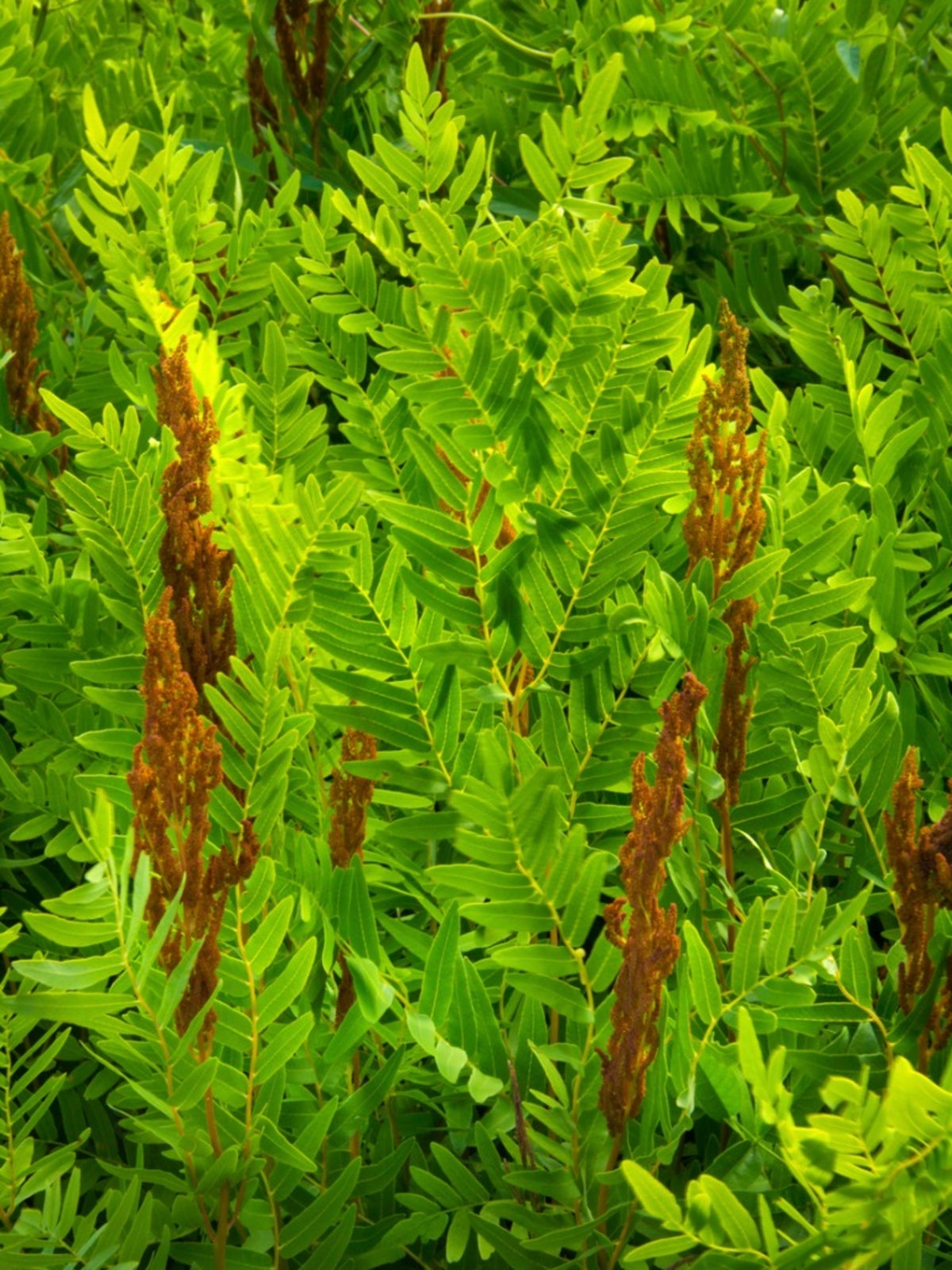Royal Fern Care - How To Plant Royal Ferns In The Garden


Royal ferns in the garden add interesting texture and color to shaded areas. Osmunda regalis, the royal fern, is large with twice cut leaves and adds an air of elegance when tucked into shady beds with companion plants of contrasting foliage. Royal fern care is simple when growing a royal fern plant in the right location. Also known as old world royal ferns, leaves are large and sometimes produce bead-like sori (spores) at the tips.
Growing a Royal Fern Plant
Royal ferns in the garden like consistently moist soil that is acidic and rich with organic matter; however, they are adaptable to lesser conditions as long as regular water is provided. Royal ferns in the garden resist damage from browsing rabbits and deer, making them a good specimen for shady, out of the way areas. When growing a royal fern plant, allow room for the plant to reach its optimum height and spread of 2 to 3 feet (61-91 cm.). Also, when growing a royal fern plant, be advised that happily located specimens may even reach 6 feet (2 m.). When learning how to plant royal ferns, observe the location first to make sure the soil stays moist, and shade is available for most of the day. If the area gets sunshine, it should be from morning sun or limited late evening sun. A soil test may be needed to determine the acidity before planting royal ferns in the garden. The addition of compost, shredded oak leaves, or pine needles will improve soil drainage and add some acidity to the soil. Prepare the soil, if needed, several weeks or months before planting royal ferns in the garden.
Royal Fern Care
Care of royal ferns, once planted in the right place, is minimal. When happy in its location, growing a royal fern plant is simple. Keep the soil moist and prune browning fronds in fall. Now that you've learned how to plant royal ferns and the ease of care of royal ferns, think of adding them to a shady area in your landscape, such as a water or bog garden or near a pond or stream. Plant them with other shade perennials for an even more attractive display.
Gardening tips, videos, info and more delivered right to your inbox!
Sign up for the Gardening Know How newsletter today and receive a free copy of our e-book "How to Grow Delicious Tomatoes".

Becca Badgett was a regular contributor to Gardening Know How for ten years. Co-author of the book How to Grow an EMERGENCY Garden, Becca specializes in succulent and cactus gardening.
-
 Looking For Plants To Give You The Soft And Fuzzies? Try These 5 Fuzzy Leaf Plant Options
Looking For Plants To Give You The Soft And Fuzzies? Try These 5 Fuzzy Leaf Plant OptionsLovers of texture, drama, silver foliage and tactile plants will adore these special sensory garden additions. These fuzzy leaf plant options will leave you all aglow
By Susan Albert
-
 Get Ready For A Summer Of Hummers! Grow These Full Sun Hummingbird Plants and Flowers
Get Ready For A Summer Of Hummers! Grow These Full Sun Hummingbird Plants and FlowersIf you’re lucky enough to enjoy a sunny backyard, make sure you are maxing out on your pollinator opportunities and grow these full sun hummingbird plants and flowers
By Tonya Barnett